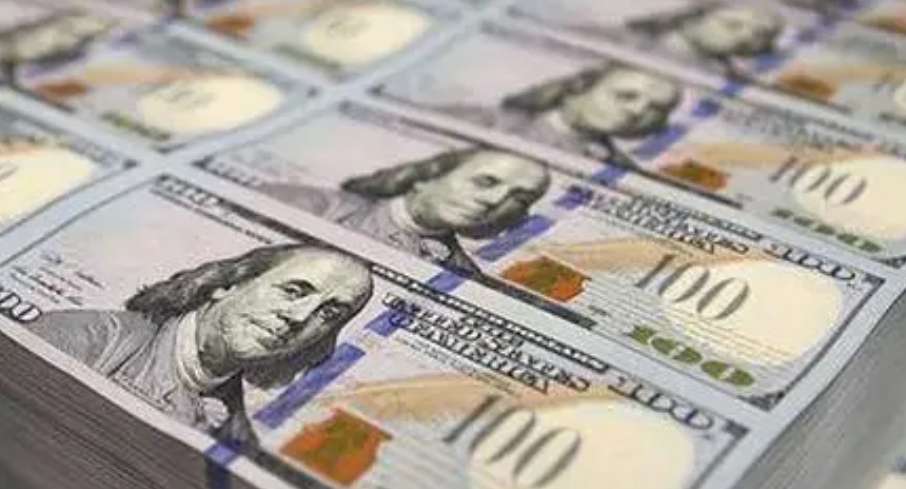Positive Outlook for U.S. Earnings Season
Advertisements
On January 15, 2024, the U.S. Bureau of Labor Statistics released vital consumer price index (CPI) data, revealing that the CPI for December 2024 increased by 2.9% year-over-year and 0.4% month-over-month. These figures were in line with market expectations. However, the core CPI, which excludes food and energy prices, rose only 3.2% year-over-year and 0.2% month-over-month, falling below projections. Such mixed signals have placed speculation on the Federal Reserve's monetary policy back in focus.
The release of these figures sparked optimism in financial markets, with expectations growing that the Federal Reserve might continue to lower interest rates. Traders increased bets on a potential interest rate cut as early as June 2024, with raised predictions for two cuts in 2025. As a result, major U.S. stock indices experienced significant gains, with the Dow Jones Industrial Average rising by 1.48%, the Nasdaq Composite up by 1.75%, and the S&P 500 climbing 1.47% by late evening in Beijing. European markets also reflected this positive sentiment, with key indices such as the Euro Stoxx 50, German DAX, and Italian FTSE MIB all rising over 1%.
The excitement in the U.S. market was further amplified by the commencement of the earnings season, as financial titans such as JPMorgan Chase, Goldman Sachs, Citigroup, Wells Fargo, and BlackRock announced their latest quarterly results, which universally surpassed market expectations. This collective success drove a notable rally in stock prices, including a notable surge of over 2% in the Philadelphia Bank Index.
As reports unfolded, the CPI demonstrated a consistent upward trend—the December increase marked the third consecutive month of rising inflation rates, the highest level since July 2024. Despite these upticks, analysts noted that the core CPI's underperformance could give the Federal Reserve the green light to consider interest rate cuts. A breakdown of the CPI showed that while the overall consumer price index rose in December, the super-core CPI, which excludes housing, rose at a slower pace, indicating a potential easing of inflationary pressures.
The financial markets responded enthusiastically, with a significant focus on how the Federal Reserve would interpret these findings. Futures traders were quick to increase their bets on a rate cut by mid-2024, with increased confidence that conditions would warrant action well before the prior expected timeline. The CME Group's FedWatch tool indicated that there was a 97.3% probability the Fed would maintain interest rates in January, while the probability of a rate cut rose significantly to 27.3% by March. Investors were hopeful that discussions around monetary policy would shift following the solid labor market performances.
Industry experts voiced mixed opinions on the implications of the CPI report. Many on Wall Street emphasized the significance of the report, tagging it as possibly one of the most crucial inflation metrics in recent years. Core CPI figures had increased steadily before this report, which raises expectations for the Federal Reserve to lean towards rate cuts at the upcoming meetings if data continues to align favorably.

Nevertheless, experts like Chris Turner pointed out the challenge the Federal Reserve faces contending with a robust labor market while attempting to control inflation. It may take several months of further inflation data for the Fed to consider a more aggressive stance on rate cuts. Concurrently, others, such as analyst Skyler Weinand, suggested that this softer CPI data provides the Fed with some leeway, with expectations of at least one cut by autumn 2024.
Furthermore, Richard Flynn, Managing Director at Charles Schwab in the UK, highlighted the complex interplay of strong economic data resulting in persistent inflation worries. Both economic performance and a resilient labor force could push prices up, suggesting the Fed might be inclined to maintain the current interest rates a little longer despite the recent CPI report.
This CPI data is particularly notable as it represents the last major inflation report during the current president's tenure, a term marked by a cumulative rise in consumer prices of approximately 20%. The incoming president is expected to be inaugurated next week with economists universally predicting that anticipated tariff policies could exert upward pressure on inflation, further complicated by recent increases in consumer inflation expectations.
As earnings reports flooded in, the strength of major financial firms set a promising tone for future performance indicators on Wall Street. JPMorgan led the way, with impressive fourth-quarter revenue growth year-over-year of 22.2%, outpacing analyst predictions. Its shares climbed nearly 2% on this news alone. Goldman Sachs reported robust earnings as well, exceeding revenue expectations significantly and seeing its stock price rise by over 4% after its results were released.
Wells Fargo's quarterly revenue hit close to analysts' expectations, lifting its stock by similar margins. In comparison, Citigroup delivered stronger-than-expected results across several measures, including a substantial increase in its return for shareholders through stock buybacks. BlackRock also reported its best-ever fund inflows during the year, earning a substantial market response with its shares soaring by over 5% post-announcement.
As markets processed these earnings along with broader economic indicators, the conclusion was clear: Wall Street was ready for a potential shift in monetary policy horizons. The speculation around rate cuts ran parallel to rising optimism signaled by corporate earnings, reflecting a potency of intertwined factors impacting U.S. financial conditions. This correlation of data presents an intriguing case for investors as they anticipate the Federal Reserve's next moves amid a dynamic economic backdrop.
Categories
Latest Post
- Concerns Over U.S. Treasury Shock?
- 2025 U.S. Job Market Overhaul
- Natural Gas Set for Sustained Rise
- U.S. Stocks Volatile, Nasdaq Sees Decline
- Yen Surges in Response
- Is the Fed's Rate Cut Ineffective?
- Can the EU Reinvent Its Competitiveness?
- The Dollar Devours the Indian Rupee
- Is the U.S. Government Debt Bubble About to Burst?
- Fiscal Revenue Decline Raises Local Debt Risks